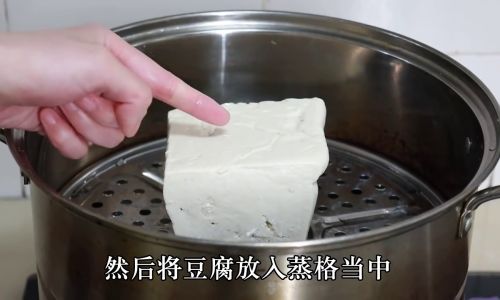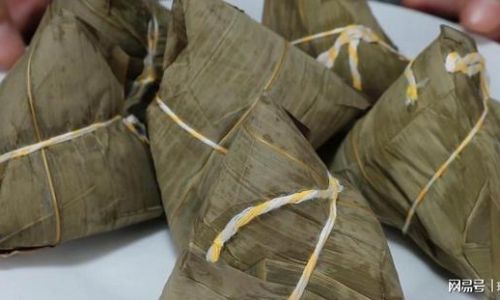Tofu, a staple in many cuisines worldwide, is celebrated for its versatility, nutritional profile, and mild flavor. However, its perishable nature demands careful attention to storage practices to ensure safety and quality. This article explores the intricacies of refrigerating tofu, examining how different variables influence its shelf life, and provides actionable tips to extend its freshness while minimizing waste.
Understanding Tofu’s Composition and Perishability
Tofu is made by curdling soy milk, a process that yields a product rich in protein, water, and minimal fat. Its high moisture content—typically between 78% and 90%—makes it a breeding ground for microorganisms if not stored properly. Bacteria such as Pseudomonas and Bacillus species, along with molds and yeasts, thrive in damp environments, accelerating spoilage. Enzymatic activity also contributes to texture breakdown and off-flavors over time.

The shelf life of tofu varies significantly based on its type. Silken tofu, with its delicate texture and minimal coagulation, is the most perishable, lasting only 3–5 days when refrigerated. Medium-firm tofu, which undergoes partial pressing to remove excess water, can last 5–7 days. Extra-firm tofu, pressed thoroughly to achieve a denser structure, often retains quality for up to 10 days if stored correctly.
Factors Influencing Refrigerator Storage Duration
-
Packaging and Initial Handling
Tofu sold in aseptic, vacuum-sealed containers or submerged in water (as in many Asian markets) has a longer initial shelf life compared to tofu exposed to air. Once opened, the clock starts ticking faster due to oxygen exposure and potential contamination. -
Refrigerator Temperature
Maintaining a consistent temperature below 40°F (4°C) is critical. Fluctuations above this threshold accelerate bacterial growth. Modern refrigerators with precise thermostats or separate crisper drawers designed for humidity control offer better preservation. -
Storage Containers
Glass or airtight plastic containers with lids are ideal for preventing cross-contamination and moisture loss. Avoid metal containers, which may react with tofu’s acidic components, altering taste and texture. -
Submersion Method
Storing tofu submerged in clean, cold water in the refrigerator is a traditional technique. The water acts as a barrier against air and contaminants while maintaining hydration. However, this method requires daily water changes to prevent bacterial buildup.
Step-by-Step Guide to Prolonging Tofu’s Shelf Life
-
Post-Purchase Preparation
- Upon bringing tofu home, immediately transfer it to the refrigerator.
- If unopened, keep it in its original packaging until use.
- For opened packages, drain excess liquid and pat the tofu dry with paper towels to reduce surface moisture.
-
Submersion Technique
- Place the tofu in an airtight container and cover it with filtered water.
- Ensure the water level is at least 1 inch above the tofu to prevent exposure.
- Change the water daily, rinsing the container thoroughly to remove biofilm or sediment.
-
Alternative Storage Methods
- Freezing: While freezing alters texture (making it chewier), it extends shelf life for 3–4 months. Press tofu to remove excess water first, then cut into portions, wrap tightly in plastic, and freeze.
- Brining: Submerging tofu in a saltwater solution (1 tbsp salt per 2 cups water) inhibits bacterial growth. Rinse before use to avoid excessive saltiness.
-
Avoiding Cross-Contamination
- Use clean utensils when handling tofu to prevent introducing bacteria.
- Store tofu away from strong-smelling foods (e.g., onions, garlic) to prevent flavor absorption.
Signs of Spoilage to Watch For
-
Visual Cues

- Discoloration: Fresh tofu is off-white or pale yellow. Grayish or brownish hues indicate oxidation or microbial activity.
- Mold Growth: Fuzzy patches in green, black, or white are clear indicators of spoilage.
-
Olfactory and Tactile Indicators
- Sour or putrid odor: Fresh tofu has a neutral, bean-like scent. Spoilage often emits a fermented or acidic smell.
- Slimy Texture: Gently press the tofu; excessive softness or a sticky surface signals degradation.
-
Taste Test (Use Cautiously)
If unsure, a tiny bite may reveal bitterness or sourness. Discard immediately if flavors seem off.
Scientific Principles Behind Tofu Spoilage
Tofu’s deterioration involves three primary processes:
- Microbial Growth: Bacteria and fungi metabolize sugars and proteins in tofu, producing gases, acids, and slime.
- Enzymatic Browning: Polyphenol oxidase enzymes react with oxygen, causing discoloration.
- Lipid Oxidation: Though tofu is low in fat, oxidation can generate rancid flavors over time.
Refrigeration slows these reactions by lowering molecular activity but does not halt them entirely. Proper storage delays the onset of these processes, preserving texture and flavor.

Common Mistakes and How to Avoid Them
-
Leaving Tofu at Room Temperature
Even for short periods, warm temperatures accelerate spoilage. Always refrigerate unused portions promptly. -
Reusing Contaminated Water
When submerging tofu, never reuse old water. Fresh, cold water each day minimizes bacterial load. -
Ignoring Expiration Dates
While unopened tofu may last past its “best by” date if properly stored, err on the side of caution. Opened tofu should be consumed within the recommended timeframe. -
Overcrowding the Refrigerator
Poor airflow raises internal temperatures. Ensure tofu containers are not packed tightly, allowing cold air to circulate.
Maximizing Tofu’s Culinary Potential Before Spoilage
To reduce waste, incorporate tofu into meal plans strategically:

- Meal Prep: Marinate and bake tofu cubes for salads, bowls, or stir-fries.
- Smoothies: Silken tofu adds creaminess to protein shakes without affecting taste.
- Fermentation: Experiment with homemade tofu fermentation (e.g., stinky tofu) for unique flavors.
- Freezer-Friendly Dishes: Prepare tofu scrambles, curries, or crumbles in advance and freeze portions.
Environmental and Economic Considerations
Tofu’s perishability contributes to food waste, a global issue with ecological and financial costs. By extending shelf life through proper storage, consumers reduce their carbon footprint and save money. Composting spoiled tofu (if feasible) also minimizes landfill impact.
Conclusion
The refrigerator is a powerful ally in preserving tofu’s freshness, but its efficacy hinges on meticulous storage practices. By understanding the interplay of temperature, packaging, and microbial dynamics, consumers can enjoy this nutrient-rich food safely for days longer. Whether submerged in water, brined, or frozen, tofu rewards careful stewardship with extended usability and culinary adaptability. Embrace these techniques to transform a fleeting ingredient into a pantry staple that delights the palate while respecting the planet.






0 comments